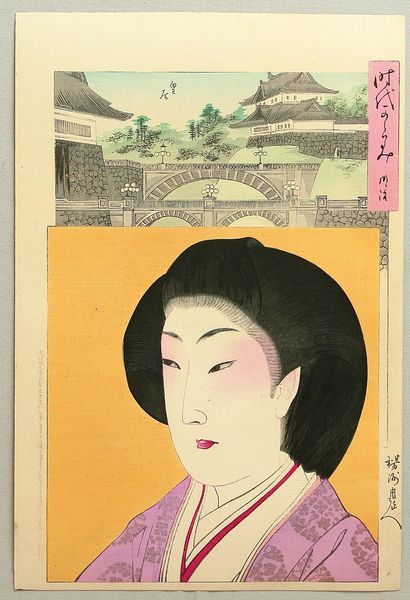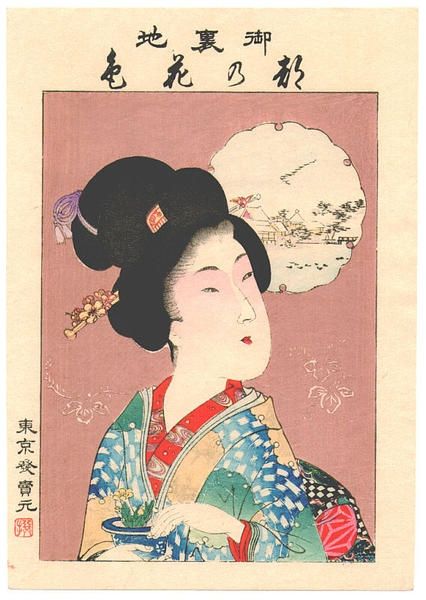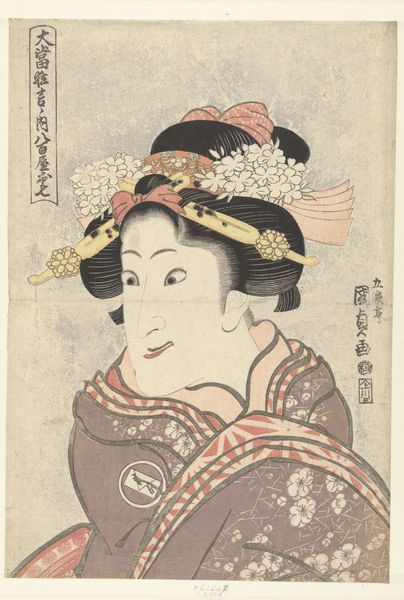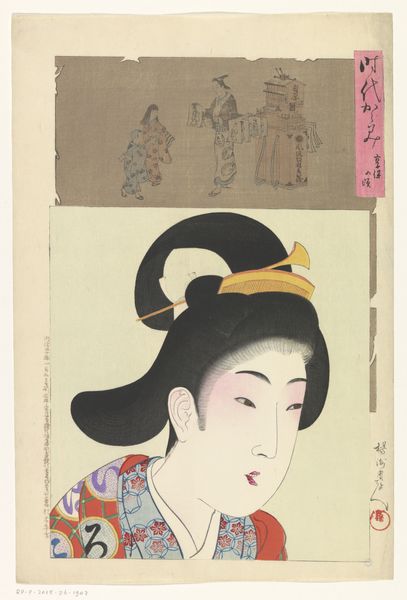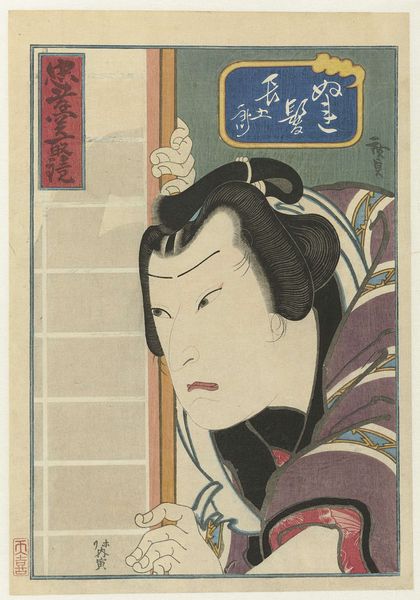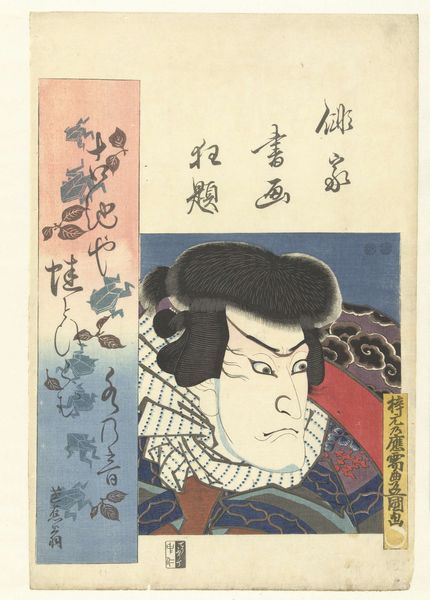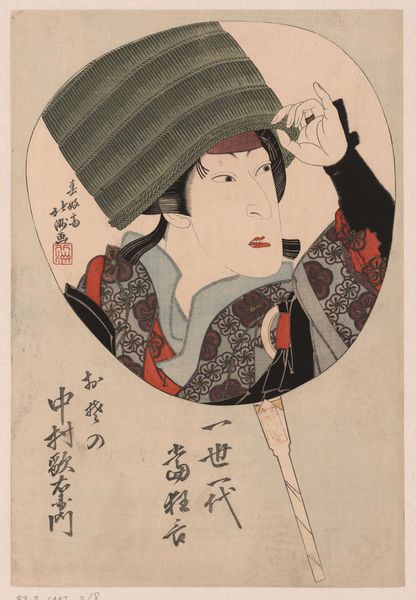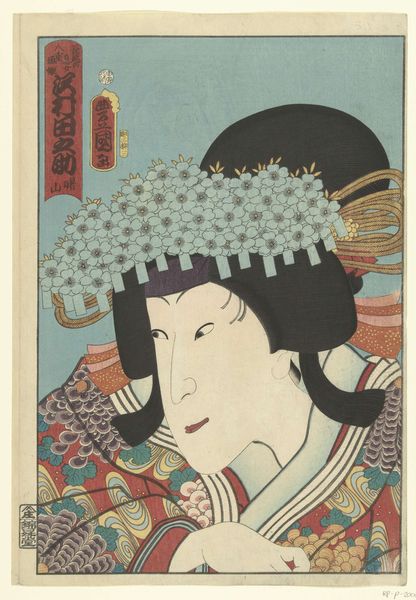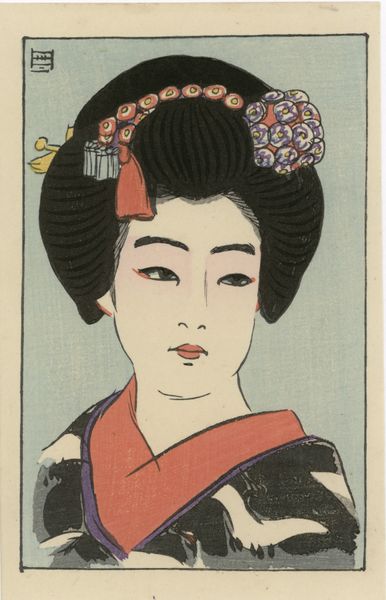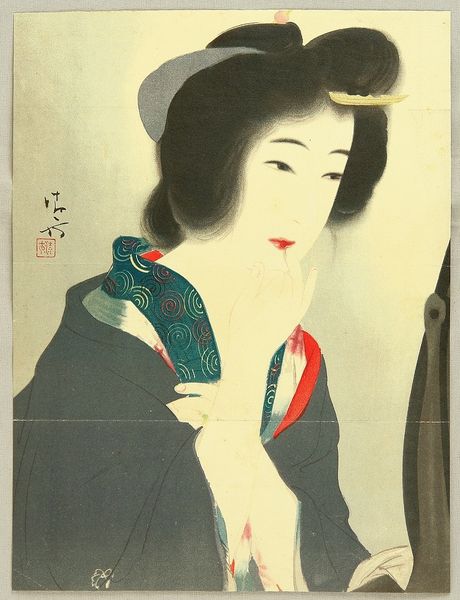
Copyright: Public domain
Editor: So, this is "Kyouhou - Mirror of the Ages" by Yoshu Chikanobu, made in 1897. It's a woodblock print, and I'm struck by how the artist juxtaposes the close-up of the woman with that small scene in the background. What do you see in this piece? Curator: I see a fascinating commentary on the representation of women in late 19th-century Japan. This print offers a window into the constructed ideals surrounding female beauty and social roles during a period of rapid modernization and Western influence. The idealized face contrasts starkly with the slice of everyday life in the inset image. Consider the implications of this placement - is it commentary on the separation of idealized beauty and daily lives? Editor: That's interesting! I hadn’t thought about the separation. I guess I saw it as a contrast between performance – the woman’s made-up face and elaborate hair – and reality. Curator: Precisely! But what does 'performance' mean in this context? Ukiyo-e prints, especially those depicting women, were often consumed by a male audience. The beauty ideals they reinforced influenced gendered social structures. The male gaze permeates the piece. How might it relate to power dynamics? Editor: So the artist is making a statement, perhaps unconsciously, about the power dynamics and the objectification of women at the time? Curator: Yes, by positioning her as a spectacle while subtly depicting everyday life alongside, Chikanobu encourages a critical viewing of these roles. We're left pondering not just her beauty, but the systems that produce and circulate it. Editor: Wow, I'm definitely seeing a lot more in it now, considering the historical and cultural context changes everything. Thanks! Curator: Absolutely, thinking about the broader societal implications, as well as the artist's possible intent is how we can unravel the work's significance.
Comments
No comments
Be the first to comment and join the conversation on the ultimate creative platform.

